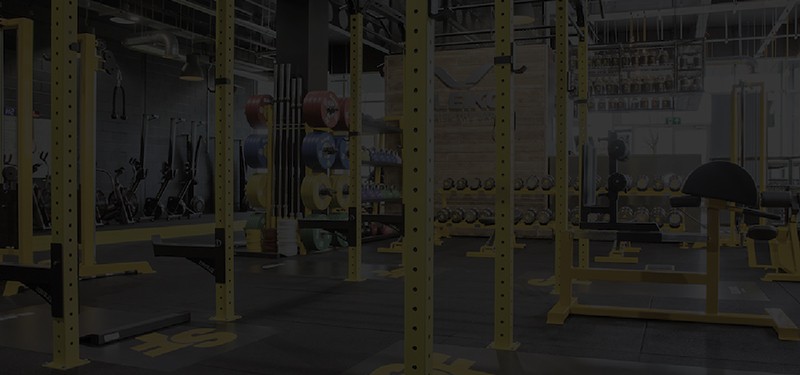Although going to the gym or heading out for a bike ride or run doesn?t have to be some kind of fashion show, it?s safe to say that what you wear can have a big impact on your comfort levels and even your performance.
Not so many years ago, if you exercised at all, you probably wore a natty old t-shirt, shorts, socks and what passed for workout shoes in those days. In some cases, this actually meant wearing street shoes!
Fast forward to the 2014 and workout wear is all but unrecognizable from what was worn as little as 25-years ago. Natural fibres like cotton are out and so too are shoes that were little more than plimsolls. In are space-age materials and shoes designed to absorb shock while controlling the motion of your feet.
Let?s take a brief look at how technologically-advanced gym clothing is making workouts more comfortable and effective…
Providing you work hard enough, your body temperature will increase significantly when you exercise. To prevent overheating, your body responds by opening up your blood vessels and directing hot blood to the subcutaneous layer of your skin so the heat can radiate away. In addition, sweat is produced which helps further regulate your temperature as it evaporates and take with it more heat.
Cotton, the material most commonly used in earlier incarnations of gym wear, was very breathable and cool when your workout was mild to moderately intense but once you started perspiring, was very quick to soak up sweat which actually meant that moisture was kept close to your skin and was unable to evaporate effectively. Sweaty cotton clings to your body like a second skin, can restrict your movements and also holds water so it can get pretty heavy. Cotton, then, is far from the ideal material for serious workout wear.
In contrast, modern workout clothing is usually made of more technical materials (there are several including Dri-Fit and Clima Cool as well as good old Lycra) that promote something called wicking. A wicking material is one that, rather than soak up water, actually directs it away from your skin for easy evaporation and is also breathable. Wicking materials are also usually slightly elastic so as not to be restrictive ? even when damp. Another bonus of wicking materials is that they are fast drying so even in the depths of winter; you don?t have to wait days for your gym training clothes to dry.
If bodybuilding or strength training are more your thing, you may well think that a typical bodybuilding vest and baggy pants are all you need for your workouts and while it?s true, the success this type of training is less influenced by clothing, technological clothing advancements can help your strength training workouts too.
In exercise anatomy and physiology, there is something called Hilton?s law which basically states that stimulating the skin that covers a muscle will also stimulate the muscle beneath. For example, wearing snug (but not overly tight) fitted shorts will enhance leg muscle contractions and a similarly fitted t-shirt will enhance upper body muscle contractions. This is, in part at least, why so-called compression clothing works so well.
In addition, compression clothing reduces muscle vibrations which, it is anecdotally reported, are responsible for fatigue. That bodybuilding vest may make your delts, triceps and biceps look awesome but a more conservative, fitted compression shirt may allow you to do more sets and reps and look better when the shirt comes off! Compression clothing is also moderately supportive which may help reduce injuries and, of course, is highly wicking. And if running or lifting weights in skin-tight clothing is not your thing, don?t worry ? you can discreetly wear compression garments under your regular workout clothes.
Technology has had a huge impact on athletic shoe design too. In years gone by, athletic shoes were designed for running or for racquet sports like tennis. Some activities such as group exercise classes, aerobics as it was commonly known, or lifting weights, were not well served by either of these kinds of shoes but that was available so that?s what you used.
Go into any sports shop now and you can find shoes for not only every type of athletic activity but also shoes that are designed to match your unique gait requirements. There are road running shoes, trial running shoes, treadmill running shoes, shoes for activities that involve a lot of lateral movement, shoes that aren?t shoes at all but as actually rubberized socks complete with toes, various styles of weightlifting shoes, shoes designed for CrossFit and even shoes that promise to help you burn more calories when you walk! As for gait, the way you walk or run, there are shoes designed to correct over pronation, supination, and excessive heel striking and generally ensure your feet hit the ground as efficiently and safely as possible.
On the flip side of highly engineered shoes, there are minimalist shoes that are designed to protect your feet while giving the impression you are exercising barefooted. It is argued that overly engineered shoes can cause more problems than they cure and that going barefoot will strengthen your feet and correct these issues. The jury is out on this complex and emotive subject but I for one like minimalist shoes for heavy gym work where squishy running shoes are less than ideal.
Clothing technology has come a very long way in the last two or three decades and wearing the right clothes for your workout can only enhance your exercise experience BUT even the best workout clothes won?t do the work for you! You still need to turn up, warm up, work out and then do it over and over again tomorrow if you want to be successful. As disgraced Tour de France drug cheat Lance Armstrong titled his first book ? ?It?s not about the bike?. Likewise, it?s not about the clothes you wear BUT the workouts that you do however the right clothes can magnify your efforts.
Look the part, feel the part and get the most from your workouts.










2 Comments
Comments are closed.